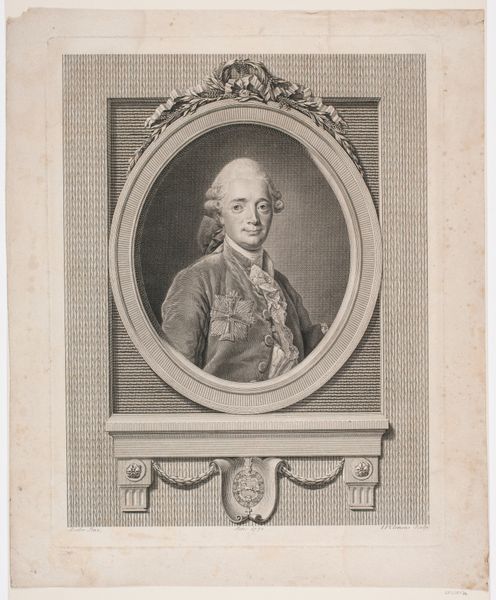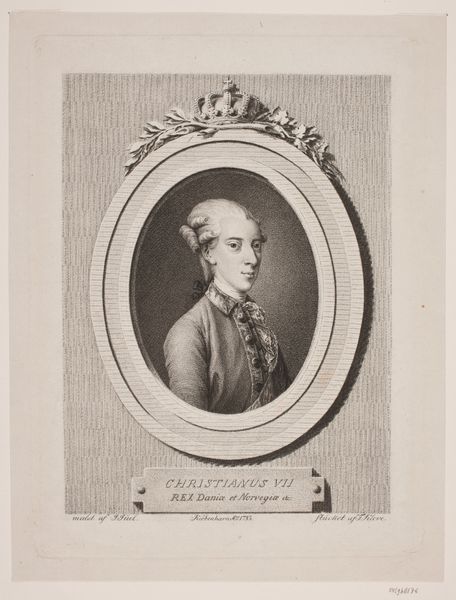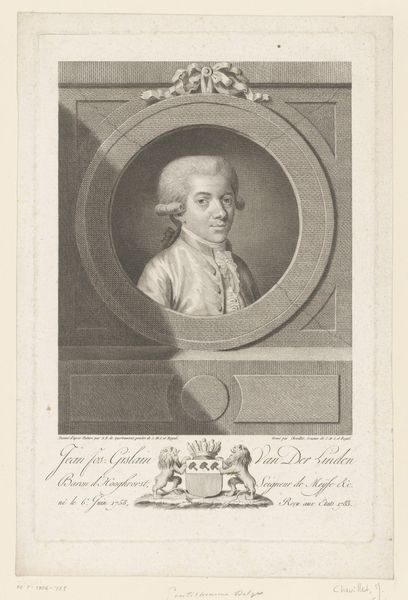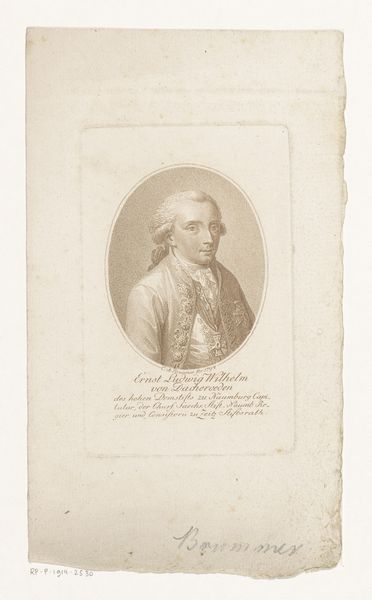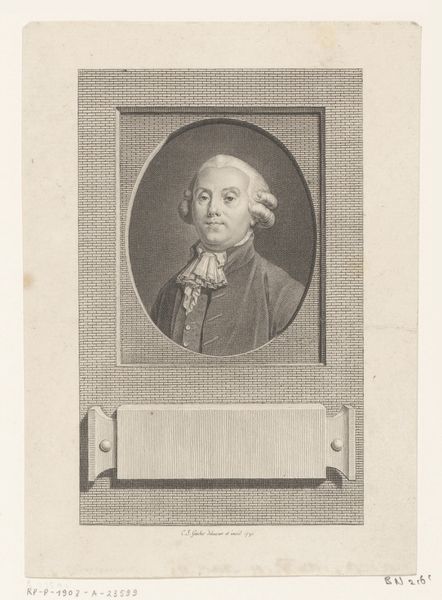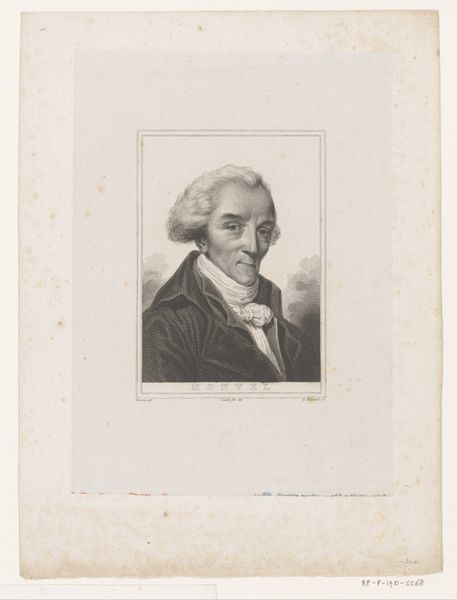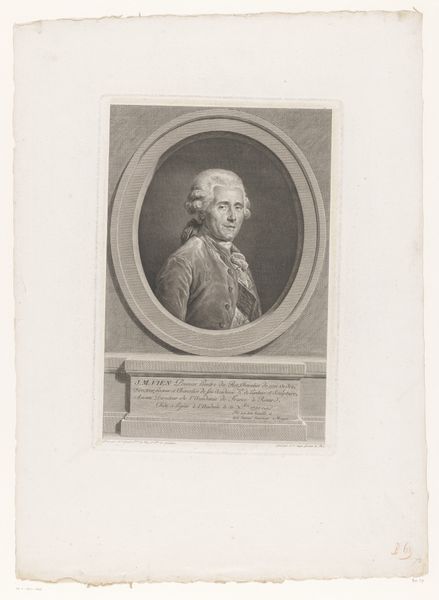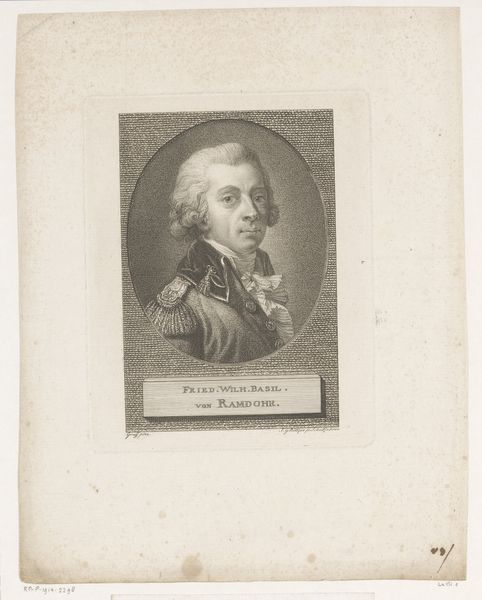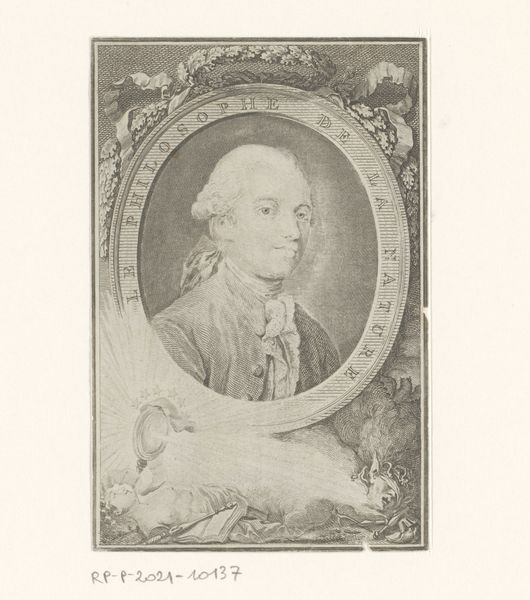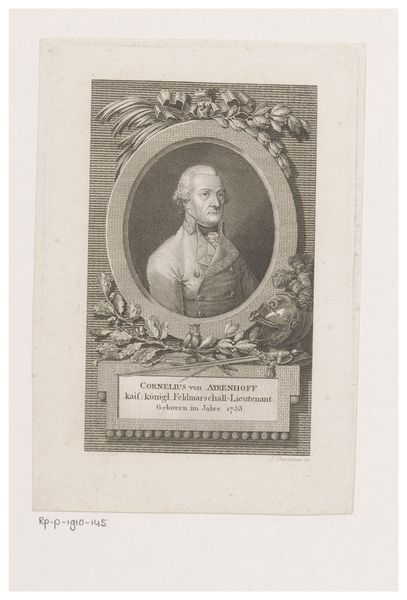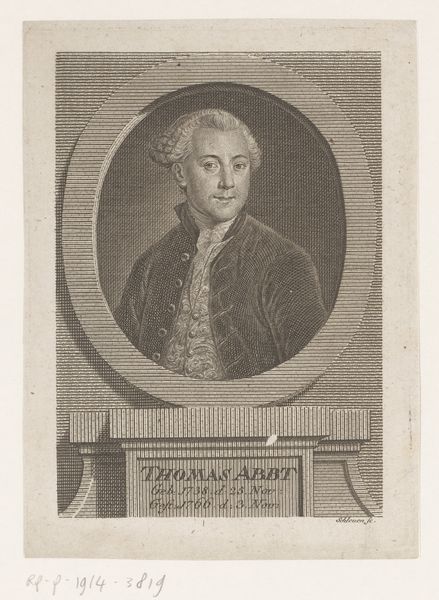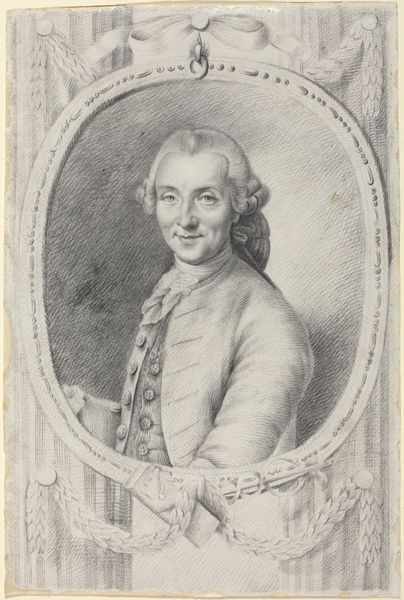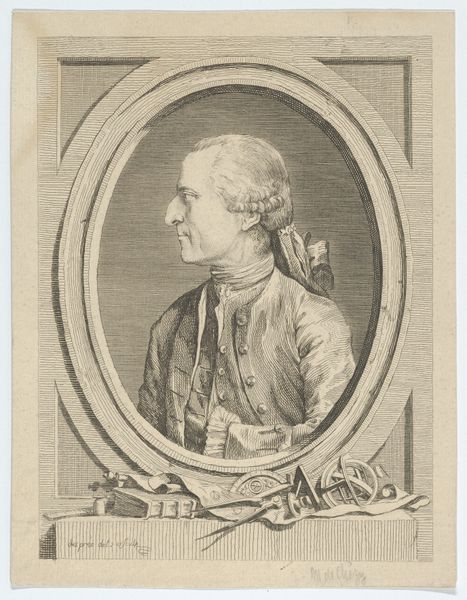
print, engraving
#
portrait
#
medieval
# print
#
old engraving style
#
history-painting
#
engraving
#
realism
Dimensions: 425 mm (height) x 281 mm (width) (bladmaal)
Editor: Here we have Georg Haas's engraving, "U. F. Suhm," created sometime between 1783 and 1816. It's a portrait, obviously, but there's something about the circular frame and the precise lines that gives it an almost official, formal feel. What can you tell me about it? Curator: It's fascinating how you pick up on that formality. Consider the function of portraiture in the late 18th century. This wasn't just about capturing a likeness. Portraits like this, especially engravings, were often commissioned to project a certain image of the sitter, to communicate power, status, and intellect, very much shaped by socio-political expectations. Who was Suhm, and why might someone want to circulate his image in this way? Editor: The inscription at the bottom of the print provides the birth and death dates, and notes that he excelled in sweetness, truthfulness, and desiring what he considered important. Perhaps he was a local dignitary? The presence of the papers and books might suggest he was an author, which made me think of how these printed portraits played a part in shaping the image of intellectual and political figures. Curator: Precisely. The choice of engraving as a medium is also significant. Engravings allowed for wider distribution than, say, an oil painting. So, it's less about private ownership and more about a broader public. How might that context alter your understanding of the portrait’s purpose? Does it still feel like just a personal likeness, or something more performative? Editor: Thinking about it, the choice of engraving suggests it was meant for distribution, shaping a carefully curated public image for Mr. Suhm, which in turn influenced his legacy within the community. I now notice how that affects my viewing, perceiving it as less intimate and more of a socio-political artefact. Curator: Exactly! We're not simply looking at a face; we are seeing how an image was strategically crafted to influence public perception. It prompts us to question who controls the narrative and whose stories are deemed worthy of preservation, and how. Editor: That’s a huge shift from my initial impression! Looking beyond the immediate subject broadens the view into social influence and crafted narratives. Thanks, I've definitely got a fresh perspective on this artwork now.
Comments
No comments
Be the first to comment and join the conversation on the ultimate creative platform.
